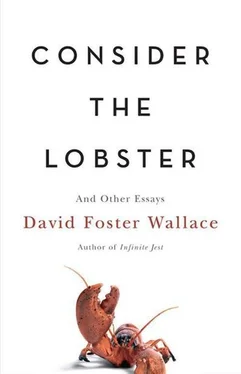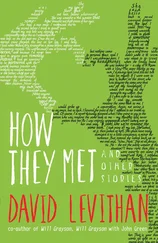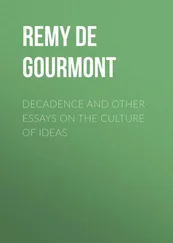As an à la carte entrée, lobster can be baked, broiled, steamed, grilled, sautéed, stir-fried, or microwaved. The most common method, though, is boiling. If you’re someone who enjoys having lobster at home, this is probably the way you do it, since boiling is so easy. You need a large kettle w/ cover, which you fill about half full with water (the standard advice is that you want 2.5 quarts of water per lobster). Seawater is optimal, or you can add two tbsp salt per quart from the tap. It also helps to know how much your lobsters weigh. You get the water boiling, put in the lobsters one at a time, cover the kettle, and bring it back up to a boil. Then you bank the heat and let the kettle simmer — ten minutes for the first pound of lobster, then three minutes for each pound after that. (This is assuming you’ve got hard-shell lobsters, which, again, if you don’t live between Boston and Halifax is probably what you’ve got. For shedders, you’re supposed to subtract three minutes from the total.) The reason the kettle’s lobsters turn scarlet is that boiling somehow suppresses every pigment in their chitin but one. If you want an easy test of whether the lobsters are done, you try pulling on one of their antennae — if it comes out of the head with minimal effort, you’re ready to eat.
A detail so obvious that most recipes don’t even bother to mention it is that each lobster is supposed to be alive when you put it in the kettle. This is part of lobster’s modern appeal — it’s the freshest food there is. There’s no decomposition between harvesting and eating. And not only do lobsters require no cleaning or dressing or plucking, they’re relatively easy for vendors to keep alive. They come up alive in the traps, are placed in containers of seawater, and can — so long as the water’s aerated and the animals’ claws are pegged or banded to keep them from tearing one another up under the stresses of captivity 8—survive right up until they’re boiled. Most of us have been in supermarkets or restaurants that feature tanks of live lobsters, from which you can pick out your supper while it watches you point. And part of the overall spectacle of the Maine Lobster Festival is that you can see actual lobstermen’s vessels docking at the wharves along the northeast grounds and unloading fresh-caught product, which is transferred by hand or cart 150 yards to the great clear tanks stacked up around the festival’s cooker — which is, as mentioned, billed as the World’s Largest Lobster Cooker and can process over 100 lobsters at a time for the Main Eating Tent.
So then here is a question that’s all but unavoidable at the World’s Largest Lobster Cooker, and may arise in kitchens across the US: Is it all right to boil a sentient creature alive just for our gustatory pleasure? A related set of concerns: Is the previous question irksomely PC or sentimental? What does “all right” even mean in this context? Is the whole thing just a matter of personal choice?
As you may or may not know, a certain well-known group called People for the Ethical Treatment of Animals thinks that the morality of lobster-boiling is not just a matter of individual conscience. In fact, one of the very first things we hear about the MLF … well, to set the scene: We’re coming in by cab from the almost indescribably odd and rustic Knox County Airport 9 very late on the night before the festival opens, sharing the cab with a wealthy political consultant who lives on Vinalhaven Island in the bay half the year (he’s headed for the island ferry in Rockland). The consultant and cabdriver are responding to informal journalistic probes about how people who live in the midcoast region actually view the MLF, as in is the festival just a big-dollar tourist thing or is it something local residents look forward to attending, take genuine civic pride in, etc. The cabdriver (who’s in his seventies, one of apparently a whole platoon of retirees the cab company puts on to help with the summer rush, and wears a US-flag lapel pin, and drives in what can only be called a very deliberate way) assures us that locals do endorse and enjoy the MLF, although he himself hasn’t gone in years, and now come to think of it no one he and his wife know has, either. However, the demilocal consultant’s been to recent festivals a couple times (one gets the impression it was at his wife’s behest), of which his most vivid impression was that “you have to line up for an ungodly long time to get your lobsters, and meanwhile there are all these ex-flower children coming up and down along the line handing out pamphlets that say the lobsters die in terrible pain and you shouldn’t eat them.”
And it turns out that the post-hippies of the consultant’s recollection were activists from PETA. There were no PETA people in obvious view at the 2003 MLF, 10 but they’ve been conspicuous at many of the recent festivals. Since at least the mid-1990s, articles in everything from the Camden Herald to the New York Times have described PETA urging boycotts of the Maine Lobster Festival, often deploying celebrity spokesmen like Mary Tyler Moore for open letters and ads saying stuff like “Lobsters are extraordinarily sensitive” and “To me, eating a lobster is out of the question.” More concrete is the oral testimony of Dick, our florid and extremely gregarious rental-car liaison, 11 to the effect that PETA’s been around so much during recent years that a kind of brittlely tolerant homeostasis now obtains between the activists and the festival’s locals, e.g.: “We had some incidents a couple years ago. One lady took most of her clothes off and painted herself like a lobster, almost got herself arrested. But for the most part they’re let alone. [Rapid series of small ambiguous laughs, which with Dick happens a lot.] They do their thing and we do our thing.”
This whole interchange takes place on Route 1, 30 July, during a four-mile, 50-minute ride from the airport 12 to the dealership to sign car-rental papers. Several irreproducible segues down the road from the PETA anecdotes, Dick — whose son-in-law happens to be a professional lobsterman and one of the Main Eating Tent’s regular suppliers — explains what he and his family feel is the crucial mitigating factor in the whole morality-of-boiling-lobsters-alive issue: “There’s a part of the brain in people and animals that lets us feel pain, and lobsters’ brains don’t have this part.”
Besides the fact that it’s incorrect in about nine different ways, the main reason Dick’s statement is interesting is that its thesis is more or less echoed by the festival’s own pronouncement on lobsters and pain, which is part of a Test Your Lobster IQ quiz that appears in the 2003 MLF program courtesy of the Maine Lobster Promotion Council:
The nervous system of a lobster is very simple, and is in fact most similar to the nervous system of the grasshopper. It is decentralized with no brain. There is no cerebral cortex, which in humans is the area of the brain that gives the experience of pain.
Though it sounds more sophisticated, a lot of the neurology in this latter claim is still either false or fuzzy. The human cerebral cortex is the brain-part that deals with higher faculties like reason, metaphysical self-awareness, language, etc. Pain reception is known to be part of a much older and more primitive system of nociceptors and prostaglandins that are managed by the brain stem and thalamus. 13 On the other hand, it is true that the cerebral cortex is involved in what’s variously called suffering, distress, or the emotional experience of pain — i.e., experiencing painful stimuli as unpleasant, very unpleasant, unbearable, and so on.
Before we go any further, let’s acknowledge that the questions of whether and how different kinds of animals feel pain, and of whether and why it might be justifiable to inflict pain on them in order to eat them, turn out to be extremely complex and difficult. And comparative neuroanatomy is only part of the problem. Since pain is a totally subjective mental experience, we do not have direct access to anyone or anything’s pain but our own; and even just the principles by which we can infer that other human beings experience pain and have a legitimate interest in not feeling pain involve hard-core philosophy — metaphysics, epistemology, value theory, ethics. The fact that even the most highly evolved nonhuman mammals can’t use language to communicate with us about their subjective mental experience is only the first layer of additional complication in trying to extend our reasoning about pain and morality to animals. And everything gets progressively more abstract and convolved as we move farther and farther out from the higher-type mammals into cattle and swine and dogs and cats and rodents, and then birds and fish, and finally invertebrates like lobsters.
Читать дальше












